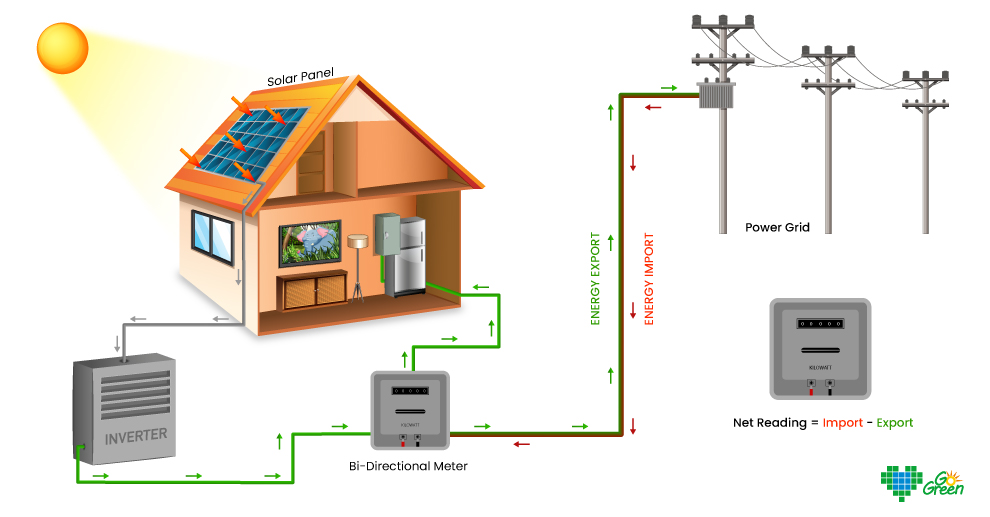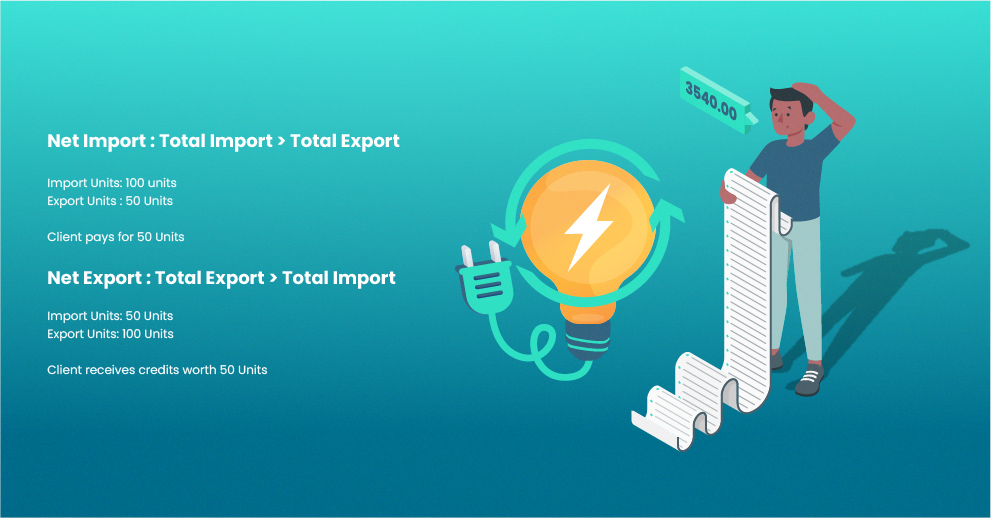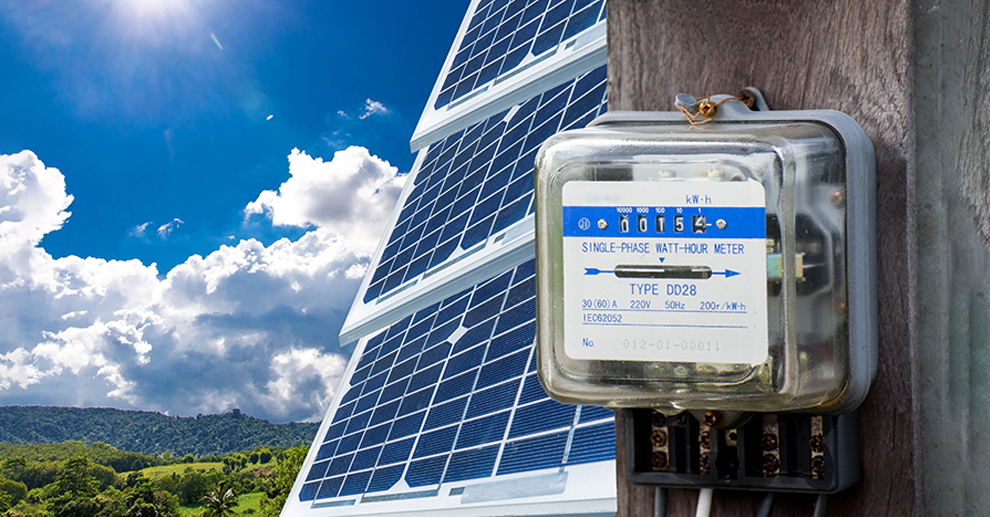Earlier, we had discussed briefly about the metering mechanisms used in solar PV systems and their overall benefits to consumers.
In India, the metering mechanisms have been introduced to make renewable energy more economical and to promote participation in solar energy generation. So let us understand how net metering works and serves the purpose.
There are basically two types of solar PV systems:

Off-Grid Systems :
In an off-grid solar systems, the solar energy produced is stored in energy storage systems like batteries, for utility at a later time.
Grid-Tied Systems :
In a grid-tied solar system, the solar energy is utilized in real time. There is no provision to store the excess unutilized energy.
Generally in a grid-tied solar system there are two possibilities:
1) The solar PV system generates more power than that consumed
2) The solar PV system generates less power than that consumed
In either possibilities it is necessary to differentiate between the import and export of power in the energy meter. This is done using bidirectional meter that records the transfer of power separately depending on the direction.

When the energy produced by the solar PV system is more than that consumed, the excess energy is exported to the utility grid. When the energy produced by the solar PV system is less than that consumed, the deficit energy is imported from the grid.
In net-metering mechanism, the total import is offset against export in the utility billing.This is called Net-Metering.
How does net-metering work?
Majority of the states in India have formulated net metering policies with varying approaches to define system capacity limits, credit retention and evacuation guidelines.

In principle, under a net metering mechanism, one can sell excess solar energy to the utility company in exchange of credits that are offset against the grid energy utilized by the consumer. During a sunny day excess electricity may be generated and fed into the grid. However during cloudy days, when the solar output is less, the credits generated shall be utilized to bring down the cost of electricity consumed. At the end of a compensation cycle, the surplus credits may be compensated by the energy company at pre-determined rates, which may differ from state to state, as per the solar power policy.
Thus under a net-metering mechanism, the consumer ends up paying only for the “net” energy i.e. the difference between the energy that is sold and the energy that is purchased.
Net metering mechanism therefore, makes solar energy affordable and enticing for consumers. Apart from bringing down the costs drastically, it helps create small power generation units in across the country, thereby trimming peak load stress on the power generation companies and prevents need for load shedding.

The Way Ahead
While a greener environment is the ultimate take away of solar energy, introducing and implementing progressive metering policies will make the sector grow exponentially.
If you want to find the right size of solar system for your household and understand the overall savings, check our solar calculator page immediately.
About LUBI Electronics
LUBI Electronics is a leading company in India, exhibiting expertise in the automation, solar, and control panel industry.
Our solar offerings include best-in-class solar modules, solar pumps, solar pump controllers and solar inverters.
For more information on our offerings, please reach out to us at lubi@lubielectronics.com.












